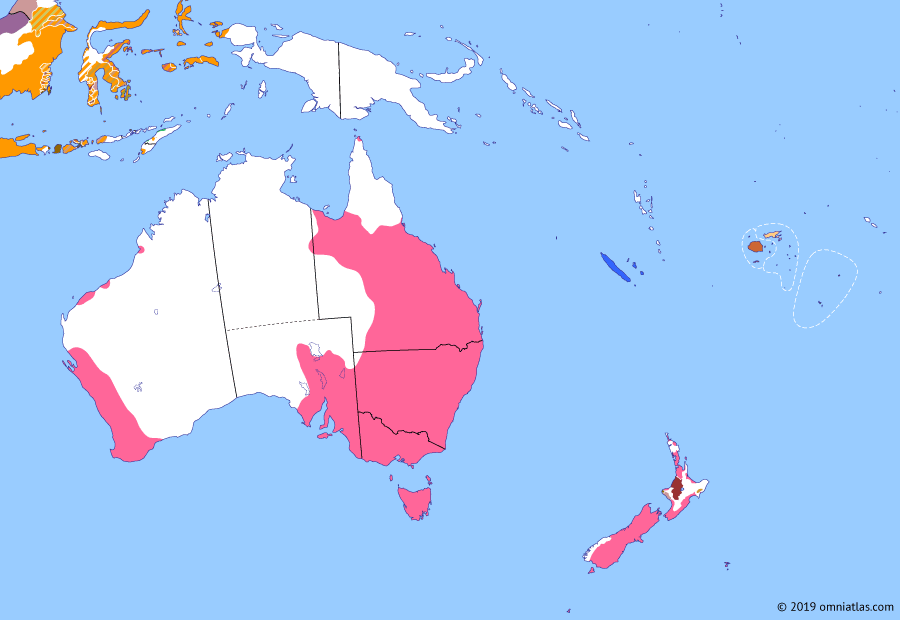Australasia 1868: ‘Hauhau’ Wars

10 November 1868
10 Nov 1868
‘Hauhau’ Wars
12 Mar 1862 Crossing the Outback
21 Jun 1864 Invasion of the Waikato
8 May 1865 Fijian Confederacy
10 Nov 1868 ‘Hauhau’ Wars
22 Aug 1872 Australian Overland Telegraph Line
13 Aug 1877 British Western Pacific Territories
6 Nov 1884 New Guinea Protectorates
20 Aug 1889 Samoan Crisis
15 Mar 1893 Partition of the Solomon Islands
14 Mar 1899 Second Samoan Civil War
After the British victory in the Waikato in 1864, King Tāwhiao withdrew south—where he would hold out in the ‘King Country’ until the 1880s—and British troops departed New Zealand, leaving remaining operations to the NZ colonial government. When the government attempted to confiscate lands from tribes it accused of supporting the King, Māori resistance revived under prophet-leaders like Tītokowaru and Te Kooti. The government called these resisters ‘Hauhau’ after a syncretic religion many of them adopted, defeating them with the aid of Māori allies by 1872.